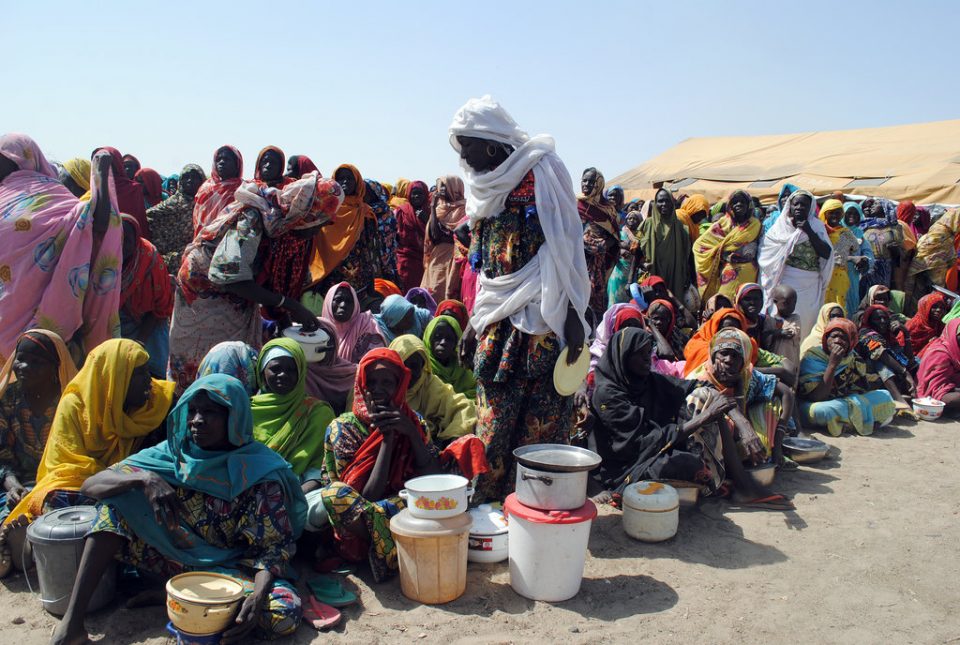Famine has afflicted at least 350,000 people in northern Ethiopia’s conflict-ravaged Tigray region, a starvation calamity bigger at the moment than anywhere else in the world, the United Nations and international aid groups said Thursday.
With their joint announcement, the humanitarian officials for the first time described the unfolding crisis in Tigray as a famine and specified the number of people suffering from it. They had warned for weeks of an impending disaster from the conflict in Ethiopia, the most populous country in the Horn of Africa.
“Alarming new data has today confirmed the magnitude of the hunger emergency gripping Tigray,” David Beasley, executive director of the World Food Program, the U.N. anti-hunger agency, said in a statement.
Mark Lowcock, the top humanitarian emergency official at the United Nations, told a webcast meeting of aid officials and diplomats that the number of people affected by the famine was “higher than anywhere in the world” and was the worst in any country since a 2011 famine gripped neighboring Somalia.
Lowcock said the data “paints a picture of a very, very extreme situation,” requiring a generous donor response and smoother humanitarian access to areas of Tigray that he said had been blocked by Ethiopian forces and allies from neighboring Eritrea.
“This is going to get a lot worse,” said Lowcock, recalling the 1980s famine in Ethiopia that caused an estimated 1 million deaths and showed the horrors of mass starvation with jarring images on television.
The new famine data was from the Integrated Food Security Phase Classification, a system used by humanitarian aid agencies and governments to determine the scale of a hunger crisis. The system is based on a five-phase scale of food insecurity — Phase 1 is minimal and Phase 5 is famine. The data showed that of 5.5 million people facing food insecurity in Tigray and neighboring zones during May and June, 350,000 were now in Phase 5.
“This severe crisis results from the cascading effects of conflict, including population displacements, movement restrictions, limited humanitarian access, loss of harvest and livelihood assets, and dysfunctional or nonexistent markets,” a summary of the data said.
Linda Thomas-Greenfield, the U.S. ambassador to the United Nations, who participated in the webcast meeting, said “the very place that woke the modern world up to the scourge of hunger” four decades ago was at risk of a repeat.
“We cannot make the same mistake twice,” she said. “We cannot let Ethiopia starve.”
The conflict in Tigray erupted in November when Prime Minister Abiy Ahmed and Eritrea ordered their military forces into the region to crush Abiy’s political rivals and strengthen his control.
Abiy, a Nobel Peace Prize laureate, expressed confidence that the operation would last just a few weeks, but it has turned into a quagmire that has severely tarnished his image. Ethiopian and Eritrean troops have been accused of ethnic violence, massacres and other atrocities in Tigray that amount to war crimes.
Last month, in a sign of growing frustration with Abiy’s government, the United States announced punitive restrictions on some Ethiopian officials, an unusual step that invited a rebuke from Ethiopia’s Foreign Ministry.
Thomas-Greenfield, who was once a top State Department official on Africa, expressed frustration Thursday that the U.N. Security Council had yet to hold a public meeting on the Ethiopia crisis, much less take any action. She attributed the lack of a response to “impediments placed in front of us by some council members” — apparently a reference to positions by China and Russia that the Ethiopia crisis is a domestic affair.
Jan Egeland, secretary-general of the Norwegian Refugee Council and a former top U.N. humanitarian official, who also participated in the webcast meeting, said unimpeded access to Tigray by aid workers was critical.
“It’s not rocket science,” he said, as he also expressed criticism over the Security Council’s inaction. “I would like to see the Security Council act like a Security Council.”
This article originally appeared in The New York Times.


